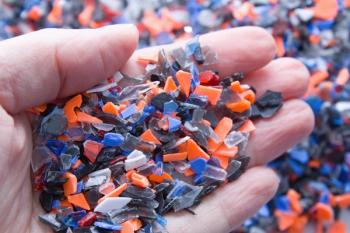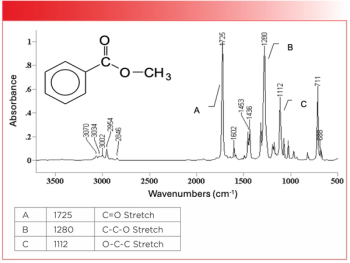
Novel Approach in Nanoscale Chemical Imaging Unveiled by Researchers
A recent study published in Analytical Chemistry examines using atomic force microscopy (AFM) in nanoscale chemical imaging in liquid and air environments.
Atomic force microscopy (AFM), when coupled with infrared (IR) spectroscopy, can help improve nanoscale chemical imaging in both air and liquid environments, according to a recent study published in Analytical Chemistry (1). Researchers from the Institute of Chemical Technologies and Analytics at TU Wien presented a novel method that utilizes flat silicon substrates as replacements for high-refractive-index prisms (1).
Atomic force microscopy (AFM) combines the principles of the stylus profilometer and the scanning tunneling microscopy (2). It is a high-resolution imaging technique that allows scientists to visualize and manipulate materials at the nanometer scale on both conducting and nonconducting surfaces, including semiconductors (3). By scanning a sharp tip, typically made of silicon or silicon nitride, across a sample's surface, AFM can produce detailed topographical maps with atomic-level precision. This technique operates by measuring the interaction forces between the tip and the sample, which can include van der Waals forces, electrostatic forces, and chemical bonding forces. AFM is versatile, providing not only images of surfaces but also information about mechanical properties, electrical conductivity, and magnetic characteristics.
This recent study explored how AFM could be used for nanoscale chemical imaging. Led by Georg Ramer, he and his team introduced a technique for bottom-illuminated AFM and infrared spectroscopy (AFM-IR).
The conventional approach to bottom-illuminated AFM-IR typically relies on high-refractive-index prisms. However, Ramer and his team showed with their new instrumentation that the flat silicon substrates offer enhanced versatility and cost-effectiveness (1). By utilizing a novel attenuated total reflection (ATR) setup, they harness the developing evanescent wave for photothermal excitation of samples, paving the way for a wide range of experiments (1).
The study compares the properties of the newly introduced Silicon-ATR (Si-ATR) with conventional methods through optical calculations and finite-difference time-domain (FDTD) modeling (1). These simulations validated the suitability of Si-ATR for AFM-IR measurements, affirming its potential to yield results comparable to traditional techniques (1).
The researchers, during experimental validation, further underscored the feasibility and efficacy of the Si-ATR approach. Using a simple polymer blend, the researchers demonstrated that the method could be used to conduct nanoscale chemical imaging and mid-IR spectroscopy with improved precision and accuracy (1).
Moreover, the versatility of Si-ATR opens avenues for more complex applications, such as studies in acidic environments and selective analyte enrichment. With silicon surface functionalization well-established, the technique promises further exploration into thin films, biomolecule analysis, and microorganism studies (1).
At the end of their study, the researchers acknowledged several limitations of their study. They noted that practical limitations must be addressed for broader implementation (1). Precise beam focusing is essential to avoid the tips and bottoms of grooves, ensuring optimal evanescent field generation (1). To ensure that there is stability in measurements, improved mounting techniques and reproducible positioning mechanisms are needed (1).
The introduction of Si-ATR for AFM-IR represents a paradigm shift in nanoscale chemical imaging, offering researchers a powerful tool for unprecedented exploration and discovery in both academic and industrial settings.
References
(1) Yilmaz, U.; Sam, S.; Lendl, B.; et al. Bottom-Illuminated Photothermal Nanoscale Chemical Imaging with a Flat Silicon ATR in Air and Liquid. Anal. Chem. 2024, 96 (11), 4410–4418. DOI: 10.1021/acs.analchem.3c04348
(2) Binnig, G.; C. F. Quate, C. F.; Gerber, Ch. Atomic Force Microscope. Phys. Rev. Lett. 1986, 56, 930–933 (1986). DOI: 10.1103/PhysRevLett.56.930
(3) Marti, O.; Drake, B.; Hansma, P. K. Atomic Force Microscopy of Liquid-Covered Surfaces: Atomic Resolution Images. Appl. Phys. Lett. 1987, 51, 484. DOI: 10.1063/1.98374
Newsletter
Get essential updates on the latest spectroscopy technologies, regulatory standards, and best practices—subscribe today to Spectroscopy.




